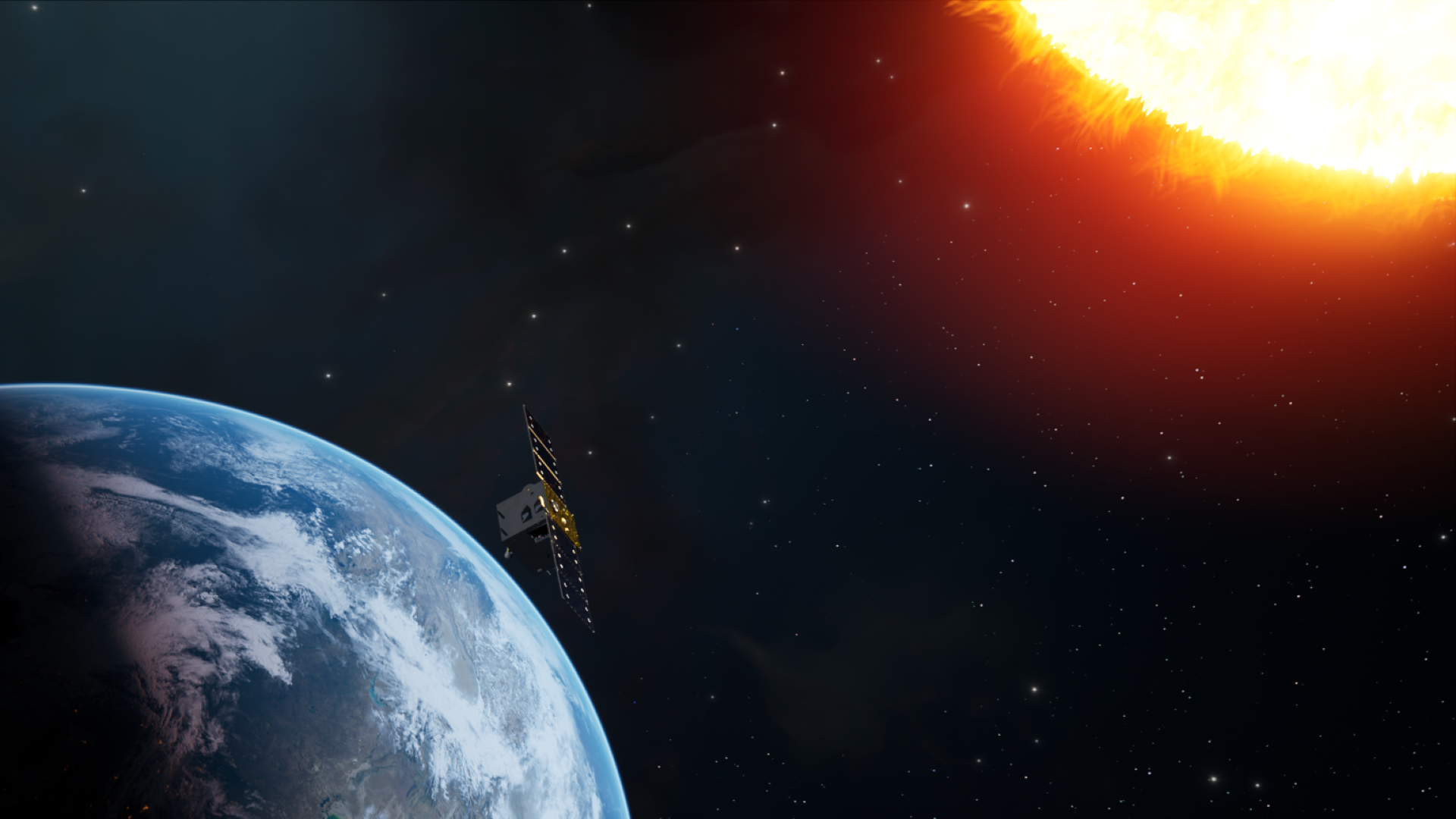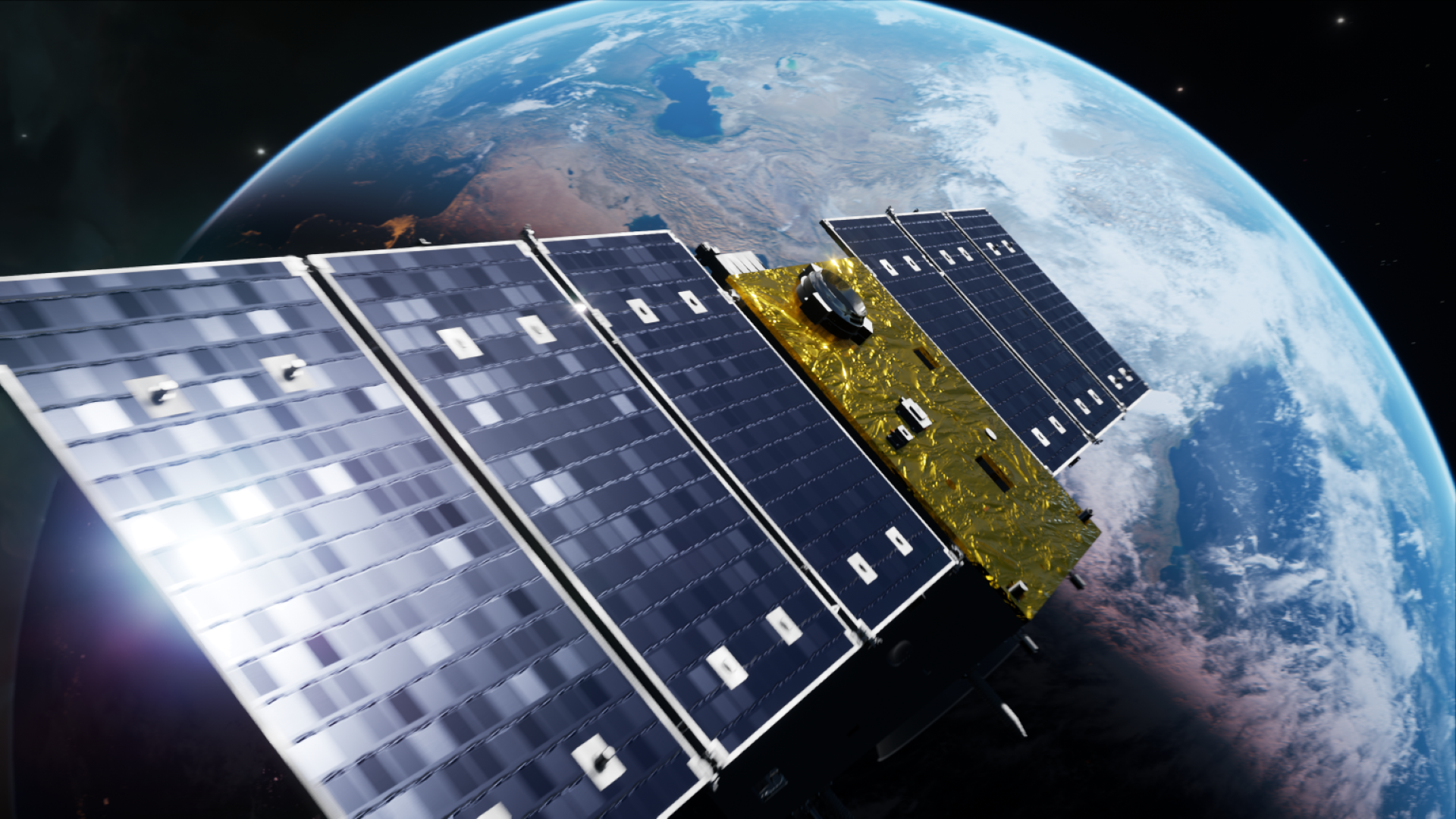
China launches its first solar observation satellite from the Taiyuan Satellite Launch Center, October 14, 2021. /CGTN
China launches its first solar observation satellite from the Taiyuan Satellite Launch Center, October 14, 2021. /CGTN
China launched its first solar observation satellite at 6:51 p.m. Beijing Time Thursday from the Taiyuan Satellite Launch Center.
The satellite is equipped with China's first solar telescope in space and will observe the deep-red H-Alpha line of the solar spectrum, enabling scientists to study solar flares.
It is called the Chinese H-Alpha Solar Explorer, or CHASE. It also has a Chinese name, Xihe, which is the name of the sun goddess in ancient Chinese mythology.
The satellite weighs 550 kilograms and has a design life of three years. Its orbit around the Earth will keep it in a fixed position relative to the sun, which it will observe, collect data and create solar images.

Its orbit around the Earth will keep it in a fixed position relative to the sun. /CGTN
Its orbit around the Earth will keep it in a fixed position relative to the sun. /CGTN
"It has ultra-high performance in direction pointing and maintaining stability," said Chen Jianxin, chief commander of the CHASE satellite, who's a researcher at the 8th Institute of China Aerospace Science and Technology Corporation.
"Just like when we shoot, we have to aim well and also keep our hands and body still to hit the target," he added.
China has built a network of ground-based solar observatories. Experts say the launch of the new satellite marks the beginning of China's exploration of the sun from space. The data will help scientists better understand solar flares, which often threaten satellite communication and navigation systems in space and on Earth.
Fang Cheng, an academician from the Chinese Academy of Sciences, said the launch of CHASE is "very important for ensuring the safety of spacecraft and astronauts."
"It helps us to avoid the solar flares and then we can complete our space researches safely. And on Earth, solar flares can also affect our satellite communication and navigation systems, having a serious impact on our lives," he explained.
Zhao Jian, director of the Earth Observation and Data Center of the China National Space Administration, said this new Chinese satellite will function differently from those launched by other countries.
"There are over 70 solar observation satellites launched by other countries. But the Chinese one is the first in the world to observe the H-Alpha spectrum of the sun, which reacts most strongly to solar flares," he said.
"We should make scientific policies to share the valuable data with scientists around the world. Then we'll have a more comprehensive observation of the sun to benefit the development of human life and society," he added.
The satellite was sent into orbit by a Long March-2D carrier rocket, which also carried two microsatellites from the Asia-Pacific Space Cooperation Organization and another eight micro satellites for commercial use.

